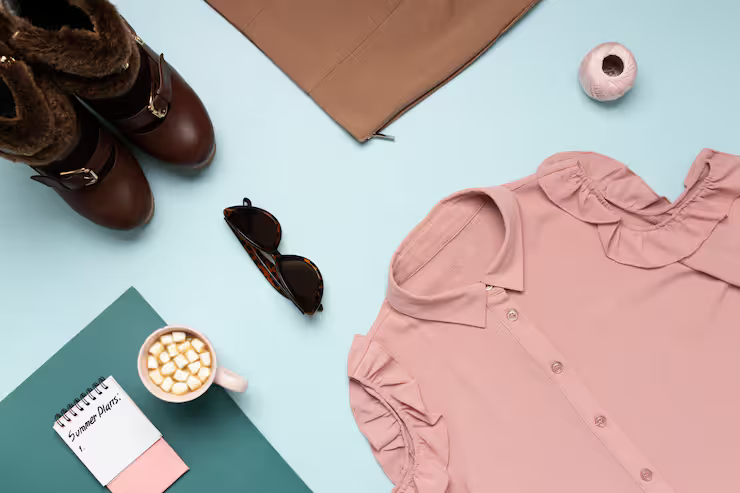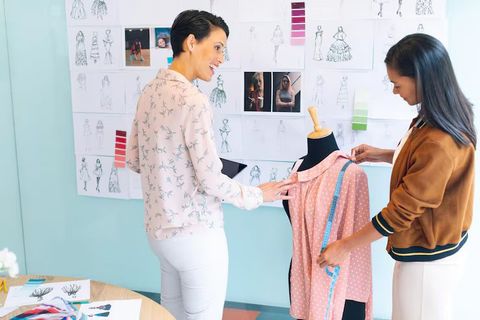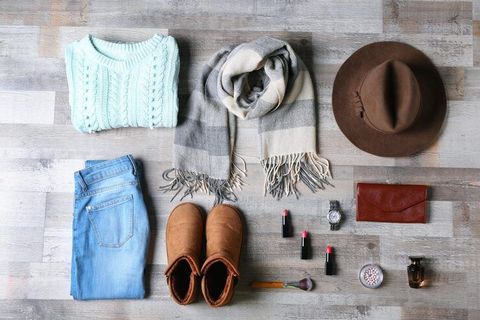The idea of women’s clothing essentials exists to help build a functional wardrobe that adapts to diverse occasions such as office settings, social events, travel, or casual weekends. Rather than following fast-changing trends, the focus today is on timeless, mix-and-match pieces that bring both style and comfort.

This concept is supported by the rise of minimalism and capsule wardrobes, which encourage thoughtful fashion choices that are versatile, sustainable, and budget-friendly.
Importance – Why Clothing Essentials Are Valuable Today
Fashion today is about purposeful selection rather than quantity. Women’s wardrobes are being designed with longevity, adaptability, and comfort in mind. A well-curated collection of essentials helps women stay prepared for any situation — from formal meetings to spontaneous getaways.
Key Benefits of Understanding Clothing Essentials
-
Saves Time and Effort: Reduces daily outfit decisions.
-
Encourages Smart Spending: Focuses on quality pieces that last longer.
-
Supports Sustainability: Reduces fashion waste and promotes conscious buying.
-
Enhances Personal Style: Helps identify what fits your lifestyle and body type.
-
Increases Confidence: Wearing the right clothes for each occasion improves self-image and comfort.
Common Wardrobe Categories
| Occasion | Essential Clothing Pieces | Recommended Fabrics |
|---|---|---|
| Office/Formal | Blazers, tailored pants, shirts, pencil skirts | Cotton, linen, wool blends |
| Casual | T-shirts, jeans, casual dresses, sneakers | Denim, jersey, cotton |
| Party/Evening | Cocktail dresses, heels, clutch bags | Silk, satin, chiffon |
| Travel | Lightweight layers, scarves, flats | Polyester blends, cotton |
| Traditional/Cultural | Sarees, kurtas, ethnic sets | Silk, georgette, cotton |
This balance between function and fashion ensures a woman’s wardrobe remains both stylish and practical.
Recent Updates – Fashion Trends and Shifts in 2024–2025
Women’s fashion continues to evolve as society embraces comfort, inclusivity, and sustainability. In 2024 and 2025, several fashion shifts have shaped how clothing essentials are chosen and styled.
Recent Trends Influencing Wardrobe Choices
-
Sustainable and Eco-Friendly Fashion (2024):
Brands are emphasizing recycled fabrics, organic cotton, and eco-conscious production to reduce environmental impact. -
Work-From-Anywhere Style:
As hybrid work continues, outfits that blend professional and casual looks — such as comfortable blazers, stretch trousers, and minimalist tops — have gained popularity. -
Athleisure and Versatility:
Mixing gym wear with streetwear remains strong, reflecting the need for both comfort and flexibility in daily dressing. -
Inclusive Sizing and Body Positivity:
Major fashion brands now offer a broader range of sizes and cuts that suit different body types, promoting inclusivity. -
Technology in Fashion:
Smart fabrics with temperature control, wrinkle resistance, and quick drying are becoming more accessible. -
Cultural Blending:
The fusion of western and traditional attire, such as pairing kurtas with jeans or sarees with jackets, is increasingly seen in urban fashion.
According to Statista’s 2025 report, the global women’s apparel market is projected to exceed USD 950 billion, highlighting the continuing demand for functional and stylish clothing across regions.
Laws or Policies – Clothing and Ethical Production Standards
The fashion industry is now closely linked to environmental and labor regulations. Governments and organizations across the world are introducing policies to promote fair trade, ethical sourcing, and sustainable production.
Key Regulations and Standards
-
Sustainable Apparel Coalition (SAC):
Encourages fashion brands to reduce environmental impact through the Higg Index. -
India’s Textile Policy (2024):
Promotes organic fabric production and support for local artisans under the “Make in India” initiative. -
EU Green Deal and EcoDesign Regulation:
Mandates that textile products sold in Europe meet recyclability and durability standards. -
Fair Labor Standards Act (U.S.):
Ensures fair wages and safe working environments in garment manufacturing. -
Global Organic Textile Standard (GOTS):
Certifies organic cotton and sustainable processing methods in apparel.
Ethical and Legal Compliance Table
| Aspect | Policy/Standard | Impact on Fashion |
|---|---|---|
| Labor Rights | Fair Labor Standards Act | Safer working conditions |
| Sustainability | EU Green Deal | Reduced carbon footprint |
| Local Craftsmanship | Textile Policy (India) | Boosts handmade production |
| Organic Materials | GOTS Certification | Promotes eco-friendly fabrics |
These initiatives ensure that clothing essentials are produced responsibly, transparently, and ethically, aligning with modern consumer expectations.
Tools and Resources – Fashion Planning and Styling Aids
Choosing and maintaining a wardrobe can be made simpler with digital tools and professional resources that support outfit planning, trend tracking, and sustainable shopping.
Recommended Fashion Tools and Apps
-
Stylebook: Helps catalog outfits and plan looks using virtual wardrobe management.
-
Cladwell: Suggests outfit combinations based on your clothing and weather.
-
Smart Closet: Organizes your wardrobe and builds capsule outfit plans.
-
Pinterest: Ideal for exploring fashion inspirations for different occasions.
-
Good On You: Rates fashion brands on sustainability and ethical standards.
-
Polyvore (revived platforms): Offers outfit ideas and community-based styling.
-
ASOS Fit Assistant: Uses AI to recommend correct clothing sizes.
-
Fashwell AI: Visual search tool to find items based on photos.
-
Vinted & ThredUp: Platforms for buying and selling pre-loved fashion items.
Useful Online Resources
-
The Business of Fashion: For updates on global trends and policies.
-
Vogue Runway: For designer collections and seasonal looks.
-
Fashion Revolution: Focused on ethical fashion awareness campaigns.
Using these platforms, individuals can plan wardrobes smarter, reduce impulse shopping, and build sustainable fashion habits.
FAQs – Common Questions About Women’s Clothing Essentials
Q1: What are the must-have basics in a woman’s wardrobe?
Every woman should own a few timeless pieces such as a white shirt, denim jeans, a black dress, tailored blazer, and comfortable flats.
Q2: How can I create a versatile wardrobe on a budget?
Focus on neutral-colored basics that can be mixed and matched. Buy quality over quantity, and add accessories for variety.
Q3: Are sustainable fashion brands more expensive?
While they may cost more upfront, their longevity and ethical production make them a better long-term investment.
Q4: How can I transition outfits between seasons?
Layering is key. Add jackets, scarves, or tights in colder weather, and opt for breathable fabrics during summer.
Q5: What is a capsule wardrobe?
A capsule wardrobe is a curated collection of essential clothing items designed to create multiple outfits without excess pieces.
Final Thoughts
Building a wardrobe around women’s clothing essentials is about balancing comfort, style, and purpose. It’s not necessary to follow every trend — instead, focus on pieces that represent your personality, fit your lifestyle, and support sustainable choices.
As fashion continues to evolve, being informed about trends, fabrics, and ethical standards empowers women to make confident, responsible, and creative wardrobe decisions.
A thoughtful wardrobe doesn’t just simplify dressing — it reflects individuality, practicality, and timeless elegance.





